Ganjnameh in Hamadan | Tourist Resort Complex
Hamadan, one of Iran's highest cities, captivates visitors with its natural wonders and rich historical legacy. This blend has transformed the city into a popular destination for short breaks.
From the tombs of renowned figures like Abu Ali Sina and Baba Taher to the historic Hegmataneh hill, there's an abundance of attractions to explore. However, Ganjnameh stands out as a particularly remarkable site.
This location defies the notion that historical monuments lack aesthetic appeal. A harmonious fusion of natural beauty and historical significance, Ganjnameh is an absolute must-visit for any traveler to Hamadan. In the following sections, we will delve into the details of Ganjnameh in Hamadan and its various components.
History of Ganjnameh in Hamadan
Ganjnameh in Hamadan boasts a rich history spanning 2,500 years, originating from the time of the Achaemenid Empire. Initially, it was known primarily for two ancient inscriptions created during the reigns of the Achaemenid kings. These inscriptions, attributed to rulers like Darius and Xerxes, reveal that the Ganjnameh route served as a significant travel path for these monarchs. The stone carvings, crafted by these kings, serve as evidence of the inscriptions' ancient origins, dating back over two millennia.
In 2000, the area was officially renamed "Ganjnameh," reflecting its transformation from a historical site into a thriving village. After 16 years of dedicated effort, Ganjnameh evolved into a recreational and tourist destination capable of accommodating up to 5,000 visitors. It has since become a popular spot for both domestic and international tourists, offering opportunities for leisure, exercise, and even overnight stays.
The Ganjnameh inscriptions, which date back thousands of years, are nestled within the rugged landscape of Alvand Mountain. These inscriptions, beautifully etched into the rock, belong to the Achaemenid period and are written in three distinct languages: Elamite, New Babylonian, and Ancient Persian, organized into three columns of twenty lines each.
Over time, the inscriptions have been known by various names, with historians offering differing interpretations. In recent centuries, the site has been referred to as both Ganjnameh and Jangnameh. The name "Ganjnameh" translates to "Book of Treasure" in Persian, reflecting the local belief that these inscriptions concealed the secret to hidden wealth. Conversely, "Jangnameh" is linked to the warlike nature of the kings from that era, with some suggesting that the original name was "Jangnameh," and "Ganj (treasure)" gradually replaced "Jang (war)" in common usage.
The Ganjnameh Inscriptions
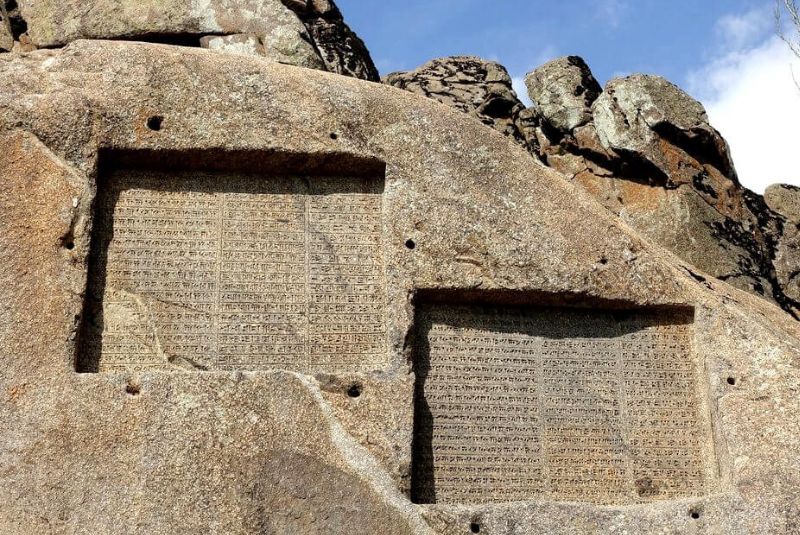
The Ganjnameh inscriptions are meticulously carved into rocks that face eastward. These inscriptions are displayed on two tablets, each measuring 9.2 meters in length and 9.1 meters in width, with a depth of 30 centimeters.
The inscriptions are presented in three ancient languages: Old Persian, Babylonian, and Elamite. On the left side of the tablets, the Old Persian text is engraved on a surface that is 115 centimeters wide. The Babylonian text, slightly narrower than the Persian, occupies the middle section of both tablets. The Elamite text is placed on the right side and is the narrowest of the three.
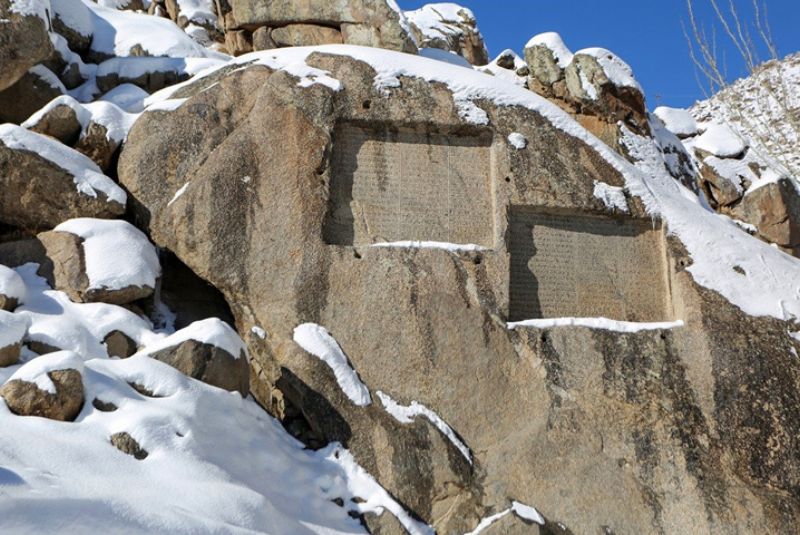
The tablet on the right was dedicated to King Xerxes, while the one on the left belongs to Darius the Great. Each of these texts contains twenty lines of writing. Surrounding the inscriptions, there are holes in the stones, which archaeologists believe were once used to attach metal covers that protected the carvings from the elements.
The Achaemenid kings intended these inscriptions to serve as a reminder to travelers of their beliefs and to honor Ahura Mazda. The inscriptions were deciphered by experts in ancient scripts in 1941, and their translations were completed in 1994. These translations are now displayed on two stone slabs located elsewhere in the Ganjnameh area.
Inscription of Xerxes
"Great is Ahuramazda, who is the greatest of gods, who created this earth, who created that sky, who created people, who created happiness for people, who made Xerxes king, the only one among many kings, the only ruler among countless rulers. I am Xerxes, the great king, the king of kings."
Inscription of Darius
"The great god is Ahuramazda, who created this earth, who created that sky, who created people, who created happiness for people, who made Darius king, a king among many, a ruler among many. I am Darius, the great king, the king of kings."
Recreational Facilities of Ganjnameh in Hamadan
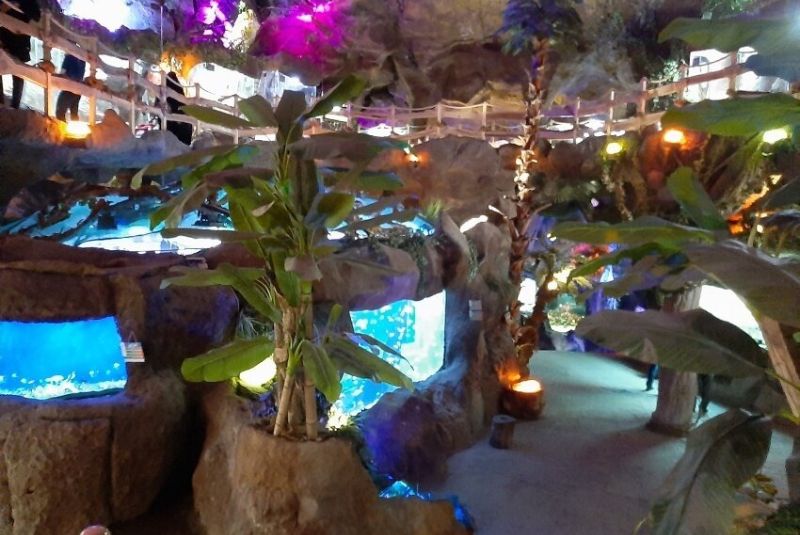
Ganjnameh village, with a capacity to accommodate 5,000 visitors, offers a comprehensive range of recreational, sports, accommodation, and educational facilities for tourists. Here, you can find everything from a bungee jumping platform and a rock climbing wall, trial track, aerial balance (Ranger), bowling hall, paintball, and an aquarium cave. Additionally, the village features a toboggan track and a round-trip cable car line, providing plenty of entertainment options for visitors. There are also various coffee shops and restaurants, an indoor playground, a plant garden, and both open and covered parking lots available.
Aquarium Cave
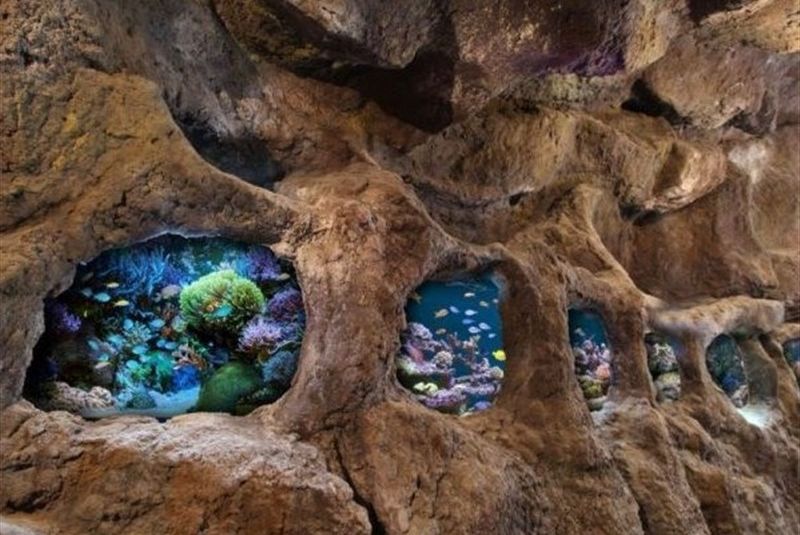
The Aquarium Cave spans an area of about 1,000 square meters and consists of two floors housing a variety of aquatic animals, reptiles, and rare species. The cave is divided into three main halls, connected by corridors filled with artificial fog, rain, and different scents, each section offering a unique experience. Glass aquariums are embedded within the rocks, displaying both saltwater and freshwater fish. The main hall holds 85,000 liters of water and features 21 aquariums, varying in size from 1x1 to 2x2 meters. On the second floor, a collection of rare environmental specimens and reptiles from around the world is showcased.
The cave is home to a range of ornamental birds, such as parrots, mandarin ducks, and birds of paradise, as well as reptiles like the Honduran boa, Burmese python, leopard python, red-tailed boa, iguana, and chameleon. Visitors can also observe butterflies, oysters, crabs, ocean corals, and various saltwater fish, including clownfish, surgeonfish, angelfish, and filefish, along with species native to the coral islands of Iran.
For those interested in botany, the Aquarium Cave offers a unique experience with native plants from different countries, housed in terrariums or open spaces depending on their growth needs. Noteworthy examples include a 150-year-old tree and Amazonian terrariums, which add a distinct charm to the cave. Additionally, the cave features special stones and minerals collected from various mountain ranges.
Ganjnameh Cable Car
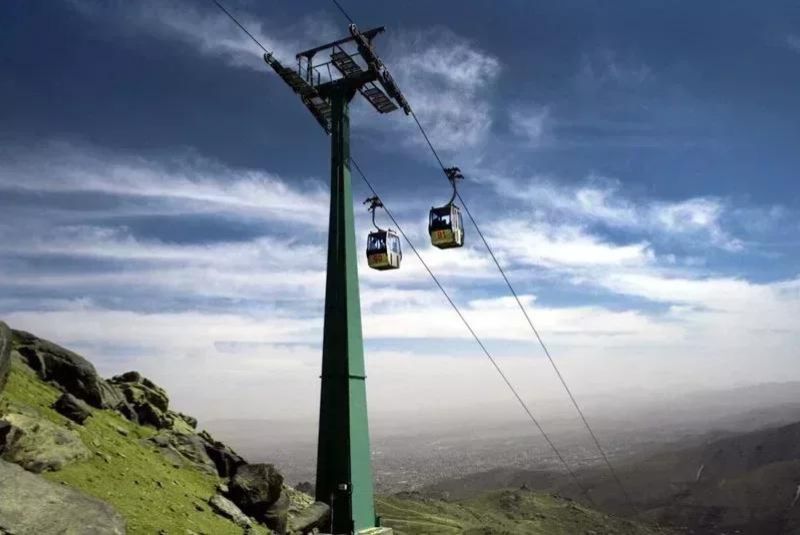
To explore the heights of the Alvand mountains and enjoy the stunning natural beauty, including the picturesque Ganjnameh waterfall, visitors can take a ride on the Ganjnameh cable car. This cable car, the only one of its kind in Iran, offers two exhilarating ascents and descents over a 1,700-meter route.
Constructed by German engineers, the cable car journey begins and ends at Mishan Plain, with the round trip taking approximately eight to 12 minutes, depending on wind conditions.
Bungee Jumping
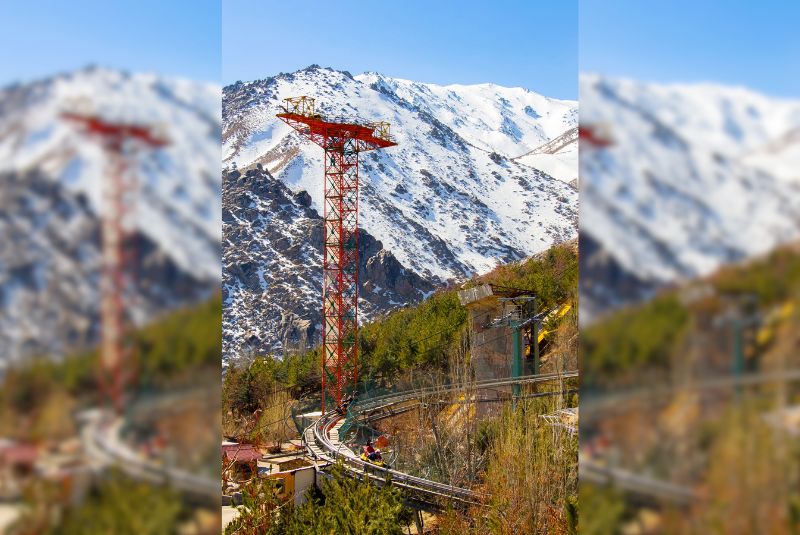
Ganjnameh is home to the only bungee jumping facility in the Middle East where two people, such as friends or spouses, can experience a free fall together. With a height of 42 meters, this bungee jump is the tallest in the Middle East, accommodating individuals weighing between 45 and 90 kilograms.
Rail Sled

The Ganjnameh rail sled, the longest and fastest in the country, measures 1,150 meters in length and reaches speeds of up to 45 km/h. Located in the heights, it offers a thrilling five to six-minute ride with high safety standards. By slowing down the sled, visitors can take in the scenic surroundings in complete tranquility.
Climbing
The Elvand mountains, with their steep peaks and grassy plains, are ideal for climbing enthusiasts. This mountain range also boasts numerous springs and rest areas for climbers.
Rock Climbing Wall
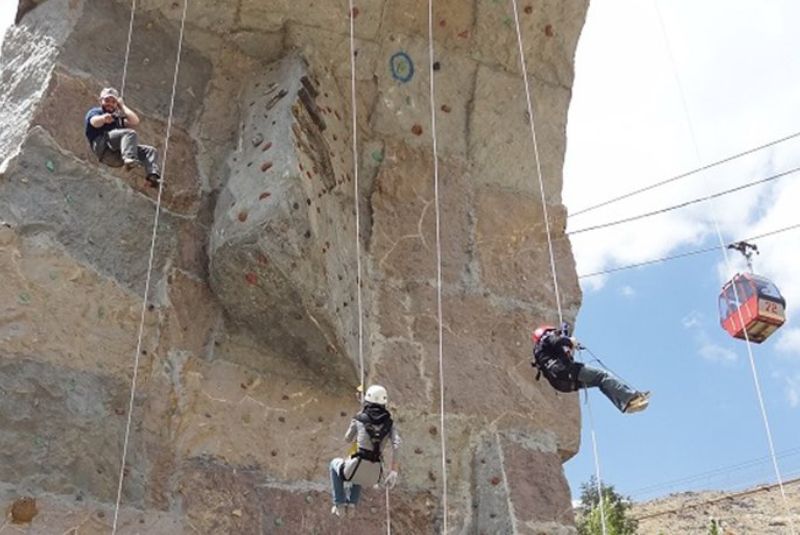
Ganjnameh Tourist Resort Complex offers rock climbing opportunities for both beginners and professionals. The rock climbing wall, located near the cable car's starting station, is 18 meters high and features three routes for beginners and five for advanced climbers. Skilled instructors are available to provide safety tips and guidance for a safe climbing experience.
Amusement Park
If you're traveling with children, be sure to visit the Ganjnameh playground, located on the fifth floor of the village's central building. The 729-meter space offers a variety of games, including:
- Ball pool
- Threshing machine
- Computer games
- Trampoline
Ganjnameh Nearby Attractions
Ganjnameh tourist, cultural, and sports village stands as one of the key attractions in Hamadan, offering a mix of recreational, historical, and natural experiences. Many visitors to Hamadan make it a point to explore this complex due to its diverse offerings. Some of the most notable attractions in the Ganjnameh area include:
Ganjnameh Waterfall
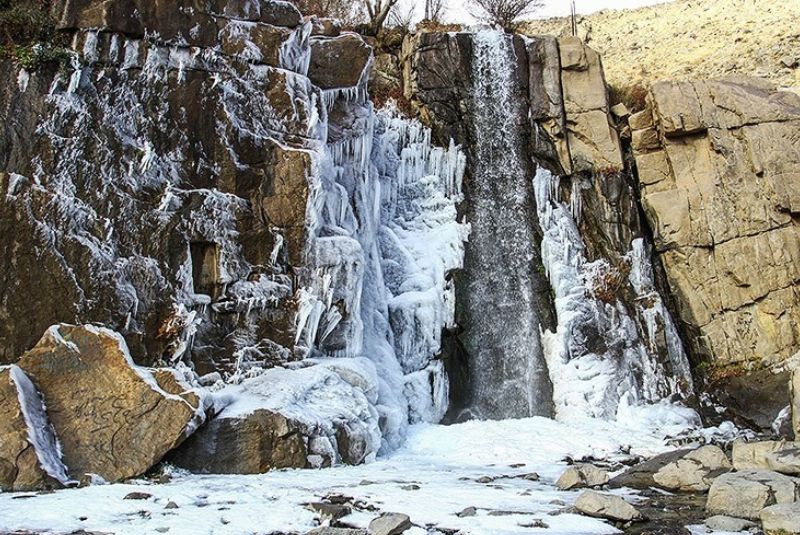
Situated along the ascent to the Alvand Mountain heights, and located five kilometers west of Hamadan, Ganjnameh Waterfall is a striking natural feature next to the ancient inscriptions of Ganjnameh. With a height of 12 meters, this waterfall maintains a continuous flow year-round, even during the winter months. The average water flow is about 200 liters per second, cascading through the scenic valleys of Abbas Abad and Ganjnameh. During winter, the waterfall becomes especially captivating as ice floes form, drawing in ice climbers. In warmer seasons, it’s also a popular spot for rock climbing enthusiasts. Recognized as the 21st national natural monument, Ganjnameh Waterfall is a must-see in Iran's natural heritage.
Abbas Abad Valley
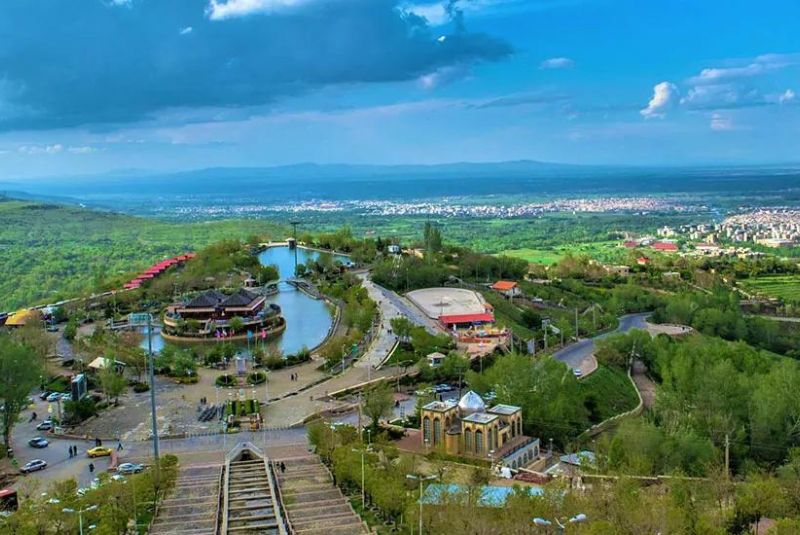
The picturesque Abbasabad Valley, with its towering trees, is located at the end of the Hazarrang Mishan Plain, southwest of Hamadan. This valley extends toward the Ganjnameh inscriptions, offering a serene and scenic environment for visitors.
Mishan Plain
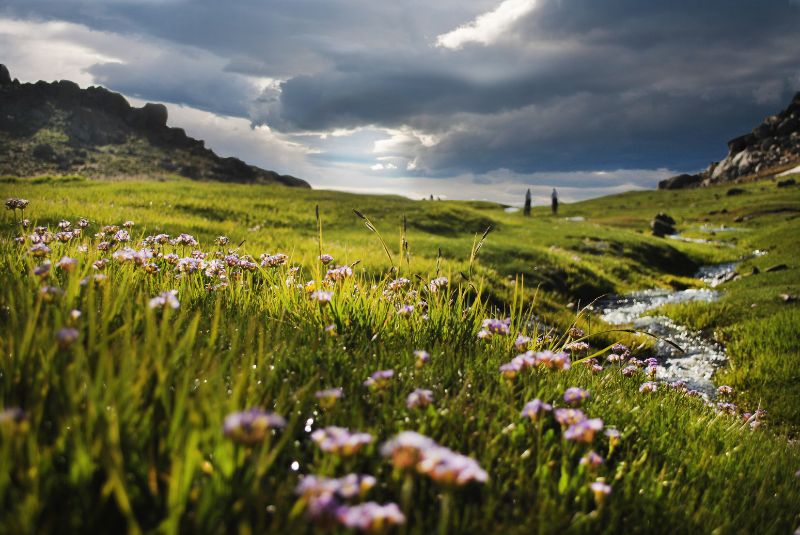
Behind the Ganjnameh Waterfall lies the enchanting Mishan Plain, nestled on the slopes of Elvand Mountain. Known for its vibrant flora, this plain becomes a hub for mountain and nature enthusiasts, mountaineering groups, and students, especially in the spring. Seasonal waterfalls add to the natural beauty of the area, flowing amidst the surrounding rocks.
Camping is a popular activity in Mishan Plain, although restrictions may apply during peak tourist seasons. The plain is divided into two sections, with one part belonging to the Ganjnameh complex and the other, accessible via the cable car, located across the river. While camping is not permitted within the Ganjnameh village, visitors can freely camp in the other section of the plain, offering a peaceful retreat in nature.
Best Time to Visit Ganjnameh in Hamadan
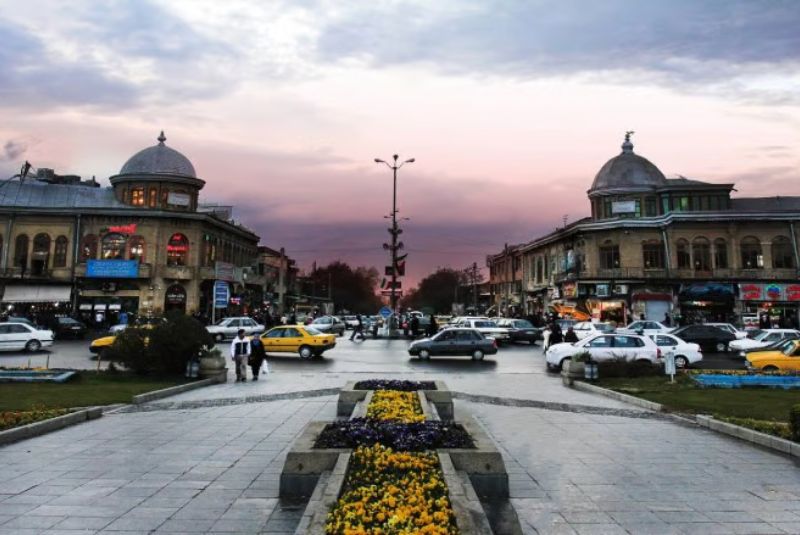
Ganjnameh Tourist Resort Complex presents a unique and captivating appearance throughout the year. However, the region truly reaches its zenith of beauty during the springtime when the weather is most pleasant. Alternatively, winter transforms the Ganjnameh waterfall and its surrounding rocks into a captivating ice wonderland, attracting ice climbers. Ultimately, the ideal time to visit Ganjnameh depends on your personal preferences and interests.
Ganjnameh Location and Access
Ganjnameh is situated in Hamedan province, approximately 5 kilometers southwest of Hamedan city, at the end of Abbas Abad Valley. The location is easily accessible and well-connected to the main city, making it a convenient destination for visitors.
Visiting Hours
The operating hours for Ganjnameh village vary throughout the year. During the first half of the year, the village is open from 8:00 AM to 10:00 PM, while in the second half, the hours shift from 10:00 AM to 8:00 PM. This schedule allows visitors to plan their trips according to the seasonal changes and enjoy the area at their convenience.
Accommodation Options in Ganjnameh
One of the highlights of Ganjnameh Tourist Resort Complex is the availability of accommodation within the complex itself, eliminating the need to search for lodging in the city of Hamedan. Visitors can choose from three different types of residences based on their preferences:
Mountain Villas
The Ganjnameh tourist resort offers 20 mountain villas that can accommodate up to 150 guests. These villas are designed for comfort, featuring underfloor heating, fully equipped kitchens, modern decor, and high-quality audio and video systems. Guests can enjoy stunning views from sunrise to the starry night sky, making it an attractive option for an overnight stay. The cost varies depending on the villa's amenities, size, and the number of guests.
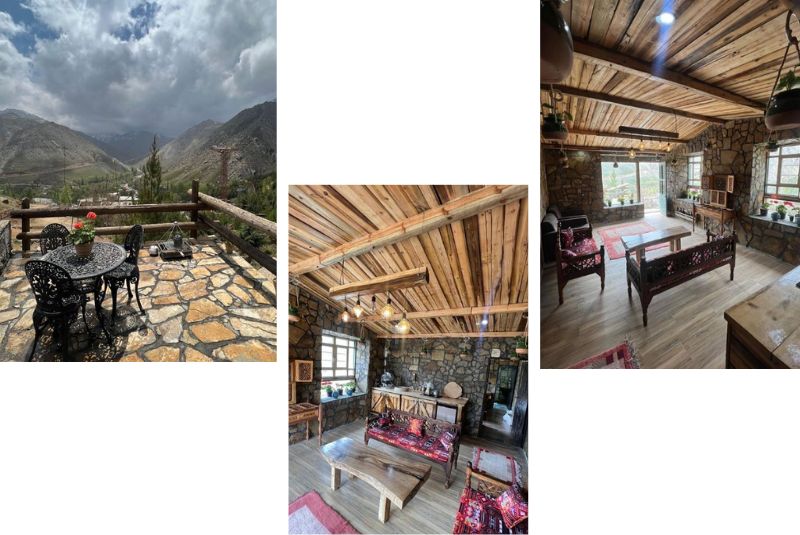
Accommodation Suites
Ganjnameh Tourist Resort Complex has 15 suites ranging in size from 20 to 55 square meters, with a total capacity of 100 guests. Each suite comes with a well-equipped kitchen, central audio and video system, pleasing decor, and private parking. Guests staying in these suites can also enjoy discounts on restaurant and coffee shop services within the complex.
Eco-Tourism Accommodation
For those seeking a more budget-friendly option, Ganjnameh offers eco-tourism accommodations. These residences, while offering fewer amenities than the mountain villas and suites, provide a cozy and authentic experience, reminiscent of staying in a traditional home. This option is ideal for those looking to experience local culture at a more affordable price.
Final Takeaway
Ganjnameh in Hamadan is a significant historical and cultural site, well worth a visit for anyone traveling through Iran. The ancient stone inscriptions, the illuminated Ganjnameh waterfall, and the vibrant flowers of Mishan Plain offer a unique and joyful experience for visitors of all ages. Be sure to include Ganjnameh in your itinerary to enjoy both its rich history and exciting recreational activities.
Share your story!
Comment below and let us know about your Experience.
Your story inspires others!


Comment
Leave a Comment